How and what to fertilize currants in the fall to get a good harvest
If blackcurrant does not receive all the necessary elements, it develops poorly, does not resist diseases, does not produce healthy growths and buds, and all this affects its yield. Therefore, she needs help in the form of feeding. Autumn feeding is very important. It helps the bush prepare for winter and lay new fruit buds.
Timely and correctly applied mineral and organic fertilizers contribute to a good harvest of berries next year.
Why fertilize currants in the fall and why is it important?
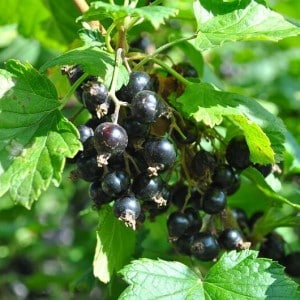 To obtain a large currant harvest next year, fertilize the bush in the fall.. During the season, the plant takes a lot of minerals and vitamins from the soil for growth and development, especially during the fruiting period.
To obtain a large currant harvest next year, fertilize the bush in the fall.. During the season, the plant takes a lot of minerals and vitamins from the soil for growth and development, especially during the fruiting period.
The soil under the bush becomes poor and needs replenishment. In the fall, after picking the berries, new fruit buds are laid, on the development of which the future harvest depends. The plant also needs to accumulate strength in order to survive the winter, and in the spring to actively develop and resist diseases.
Feeding helps the bush recover and prepare for winter and next year.. In addition, according to experienced gardeners, a fed bush does not need to be bent down and covered for the winter.
In autumn, shrubs need phosphorus and potassium fertilizers. They make the plant resistant to frost, and in the spring they contribute to its development.Nitrogen fertilizing is not used in the fall, as it activates the metabolic process in the plant and promotes the development of new shoots. The main branches of the currant are not strengthened, and this leads to the death of the plant in the cold.
Fertilizer application timing
Feed the bush in several stages. So, in central Russia the first feeding is carried out in Septemberwhen the fruiting period ends.
The second - in October or early November, a month before the onset of frost. At this time, the plant is dormant.
The third feeding is carried out with the onset of the first frost. (end of November – beginning of December). Organic fertilizers - manure or compost - are added to the soil. They decompose for a long time and saturate the soil with useful substances by spring.
Advice. Nitrogen fertilizers are applied until mid-July. They prolong the lifespan of currants, so adding them in the fall will lead to the death of the plant in the cold.
In the northern regions, the first feeding begins in August, in the south - in October.
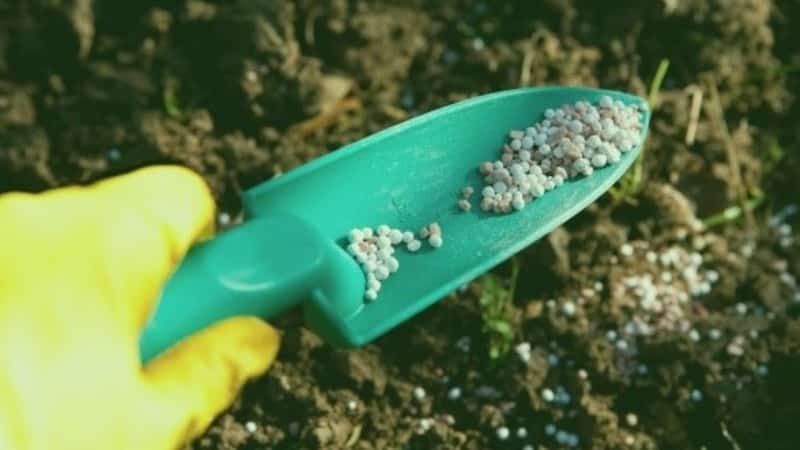
When shrubs grow on sandy loam soils Autumn feeding is carried out annually, on loamy soils - once every two years, on chernozem soils - once every three years.
When applying fertilizers, the soil is loosened. If the fall is dry, water it so as not to burn the roots of the plant.
It can be useful:
Guide to planting currants in autumn
How and when to collect currant leaves for drying for the winter
Types of fertilizers
In order not to harm the currants, fertilizing is carried out at the optimal time in compliance with the norms and rules of application specific fertilizer. In autumn, mineral, organic and complex fertilizers are used.
Mineral
Mineral fertilizers contain many nutrients. Depending on the composition, they are divided into simple and complex. When using them, the proportions are observed so as not to harm the currants.
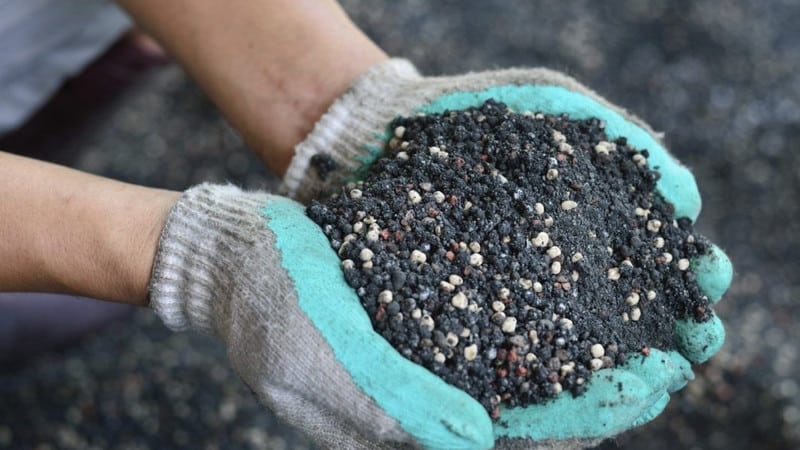
Mineral fertilizers are nitrogen, potassium and phosphorus:
- Nitrogen fertilizers (saltpeter, urea) promote the growth of green mass. In spring, they help the plant grow and develop. Abuse of them leads to burns of the roots and accumulation of nitrates in the berries.
- Phosphorus fertilizers (superphosphate) increase immunity to diseases and pests. With their help, plant cells accumulate and retain moisture, which plays an important role in winter and dry times. There is never too much phosphorus, as the bush absorbs it as needed. But its deficiency in the soil leads to the fact that the plant cannot absorb nitrogen.
- Potash fertilizers (potassium sulfate, potassium sulfate) stimulate biological processes in the bush, strengthen it, which is important for winter preparation.
Organic
These fertilizers are based on plant residues, which help improve the soil - increase its moisture and breathability.
Organic fertilizers contain nitrogen and phosphorus in small quantities. For example, leaf and grass compost has a nitrogen content of 1.5%. Potassium is contained in the form of soluble salts that are easily washed out with water.
Organic fertilizers include bird droppings, compost, manure. The latter is used rotted so as not to burn the root system.
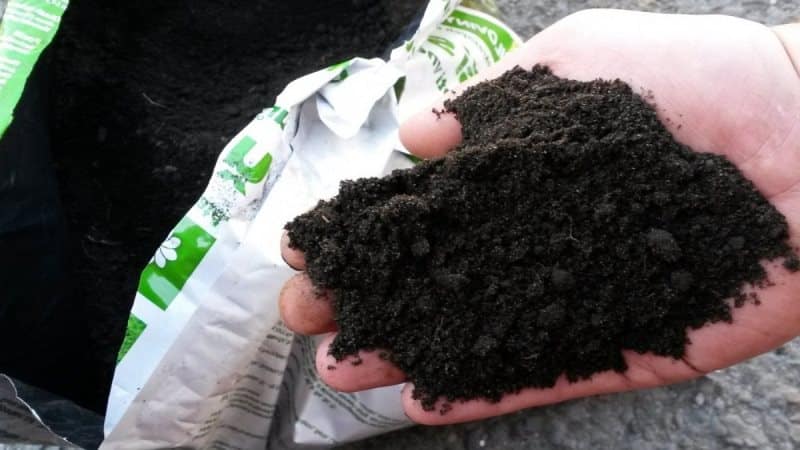
Green manure
Green manures (vetch, lupine, peas) also act as organic fertilizers. In addition, they suppress the growth of weeds and protect against fungal and bacterial diseases.
Green manures are used in various ways as organic matter.:
- use cut top parts of plants as mulch;
- the mown grass is crushed, mixed with wood ash and applied under the bush;
- in the fall they dig up the earth along with the greenery of the plants.
Complex
They contain all the minerals necessary for the plant in the right quantities.. Their use frees you from the need to independently measure and mix various components for feeding. The main disadvantage of such fertilizers is their high cost.
There are complex fertilizers for autumn and spring feeding. This should be taken into account when purchasing.
What is the best way to feed currants in the fall for a good harvest?
Fertilizers are applied in two ways:
- Root feeding. Fertilizer is applied in dry or liquid form at the root of the plant.
- Foliar feeding. Spray the above-ground part of the plant. The beneficial effect of fertilizing with this method has a shorter period. More often this technology is used as an auxiliary to the first method.
For autumn feeding, the first method is used. Unlike the second, it feeds the bush more slowly and longer.
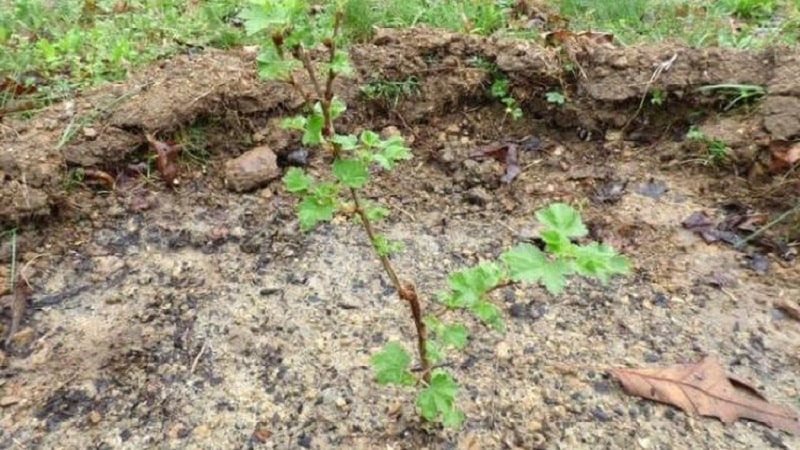
How to fertilize currants in the fall? When fruiting ends, the shrub is in greater need of phosphorus and potassium. These fertilizers:
- increase resistance to frost;
- strengthen the root system;
- increase immunity to diseases;
- increase future harvest.
Mineral and organic fertilizers in dry and liquid form are used for feeding. and use traditional methods.
Reference. The combination of mineral and organic fertilizers is the most effective method of feeding plants.
Traditional methods
At home, folk methods of fertilizing currants are used. One of them is feeding with infusion from potato skins, which is rich in starch, glucose, vitamins, potassium and other beneficial substances.
How to cook:
- Potato peelings in a volume of 1 liter are poured with 2 liters of boiling water.
- Cover with a lid and leave for 2 hours.
- The resulting infusion is poured under the currants along with the peel - it enriches the soil with organic substances.
The ground is also fertilized with a mixture of wood ash and ground potatoes.. The composition of the ash depends on the type of wood. The ash from deciduous trees contains a lot of potassium, and the ash from coniferous trees contains phosphorus. To prepare the mixture, unpeeled potatoes are grated or ground in a meat grinder. Wood ash (0.5 l) is poured under the bush, and chopped potatoes 5-7 cm thick are mulched on top.
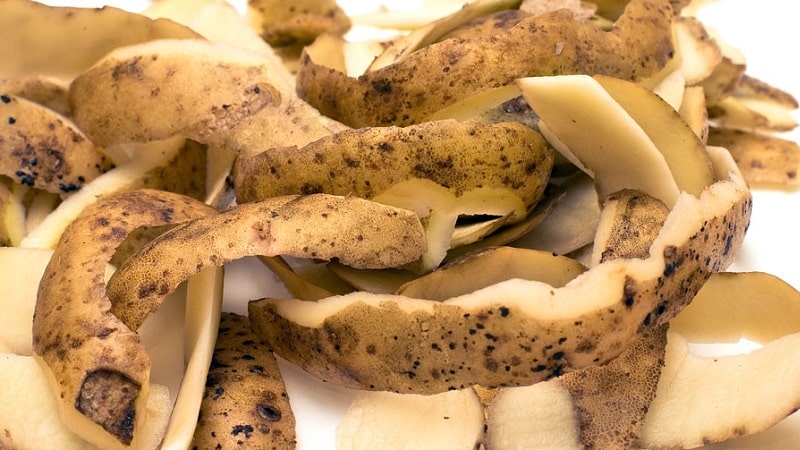
Purchased fertilizers
What fertilizers should be applied in the fall to feed currants?:
- Phosphorus-potassium - potassium monophosphate. When applied dry, 15 g per bush is required. To apply in liquid form, 15 g of fertilizer is dissolved in 10 liters of water and poured under the bush.
- Mineral fertilizers - potassium sulfate and superphosphate. In dry form, 15 g of potassium sulfate and 30 g of superphosphate are added to the bush. For liquid feeding, this amount of fertilizer is dissolved in 10 liters of water.
- As organic - chicken droppings. In dry form, add 800 g per 1 sq. m. The litter is mixed with soil in a 1:1 ratio so as not to burn the roots. Scatter around the bush and drop to a depth of 15 cm. To prepare the solution, bird droppings are combined with water in a ratio of 1:15. To get the maximum effect, 15 g of potassium sulfate and 30 g of superphosphate are added to the soil with dry bird droppings. Or, after adding manure, the soil is watered with a solution of these fertilizers diluted with 10 liters of water.
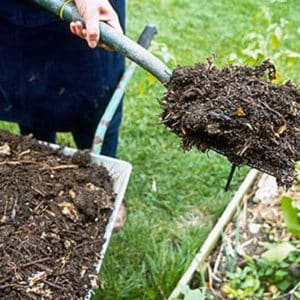 Organic - humus or compost. They mulch the ground around the bush (1 bucket per 1 bush). For greater effect, before applying organic fertilizers, water the soil with a solution of superphosphate (2 tablespoons per 10 liters of water).
Organic - humus or compost. They mulch the ground around the bush (1 bucket per 1 bush). For greater effect, before applying organic fertilizers, water the soil with a solution of superphosphate (2 tablespoons per 10 liters of water).- Complex feeding from organic and mineral fertilizers. For 1 bush add 1 bucket of humus or compost, 40 g of potassium salt and 60 g of superphosphate.
- Complex fertilizers “Ryazanochka”, “Autumn”, “Harvest in a bucket”, etc. They are bred in accordance with the instructions.
Read also:
How to properly fertilize currants at this time
Before fertilizing, water the soil under the plantso that the root system does not get burned.
Mineral and organic fertilizers are best applied in liquid form. To do this, they are dissolved in water. A depression (15 cm) is made around the bush at a distance of 30 cm, the solution is poured into the groove, then sprinkled with earth. The rate of application of liquid fertilizers is 10 liters per bush.
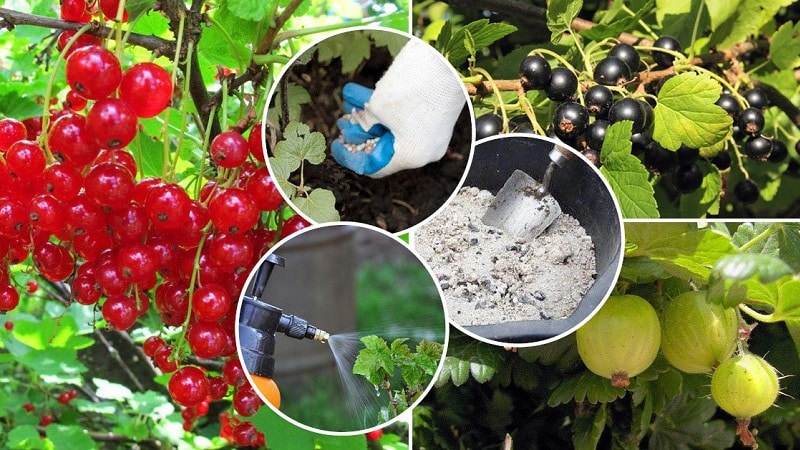
When applied dry, they are embedded in the soil. to a depth of no more than 15 cm, so as not to burn the roots.
The best time to feed - morning or evening, allowed during the day in cloudy weather.
Attention! Improper and irregular application of fertilizers can lead to the death of the plant.
Conclusion
Autumn feeding helps currants recover after fruiting, prepares the plant for winter, strengthens immunity to various diseases, and contributes to a large harvest for the next year.
The most effective method is considered to be a combination of organic and mineral fertilizers. In order not to harm currants, fertilizers are applied at the optimal time, observing the rules and regulations.